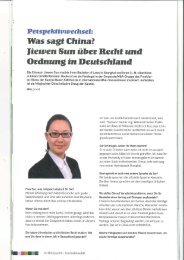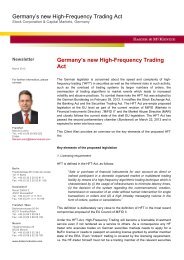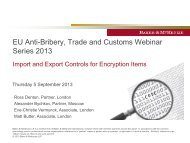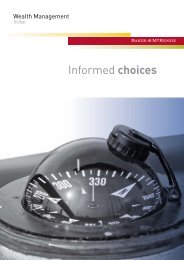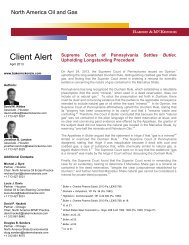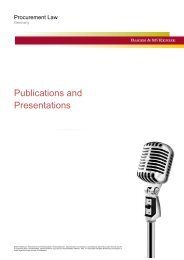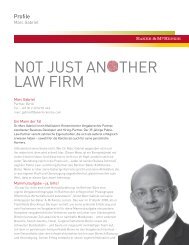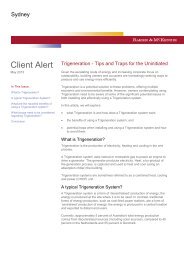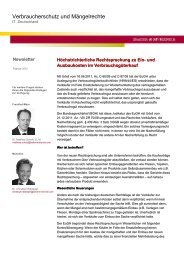Read publication - Baker & McKenzie
Read publication - Baker & McKenzie
Read publication - Baker & McKenzie
Create successful ePaper yourself
Turn your PDF publications into a flip-book with our unique Google optimized e-Paper software.
Canada<br />
the taxpayer’s activities relating to a particular period or transaction. 6 Depending on<br />
the nature of the examination, the taxpayer may have been subject to any number of<br />
information-gathering audit activities prior to the actual assessment of tax. The taxpayer<br />
will normally also have been advised in writing of the basis for the assessment and will<br />
have been given opportunities to make representations concerning any controversial<br />
factual or legal issues. The significance of these pre-assessment interactions cannot be<br />
overemphasised: most disputes will be resolved through communications with the tax<br />
authority well before the making of a formal assessment. Once made, however, a tax<br />
assessment is deemed to be valid and binding and can only be modified through the<br />
formal objection and judicial appeal process, or by virtue of a subsequent reassessment<br />
made under the same statute. 7<br />
The required first step in commencing the objection and appeal process is filing a<br />
written notice of objection that sets out the relevant facts and reasons for the objection. 8<br />
Under the Act, taxpayers must normally object within 90 days of the disputed assessment,<br />
irrespective of the length of the audit leading up to the assessment or the number of issues<br />
that the assessment covers. 9 Unlike other taxpayers, most corporations 10 are obligated to<br />
include extensive details in their written objections, and any subsequent litigation will<br />
be limited to the issues raised in those documents. 11 They are also obligated to pay 50 per<br />
cent of any disputed amount fixed by an assessment while waiting for the outcome of<br />
the objection and appeal process. 12 Although the same obligation does not apply to other<br />
taxpayers, many taxpayers will pay the disputed amount in full, since the interest on any<br />
unpaid portion is usually non-deductible and is calculated at a substantially higher rate<br />
than that which applies to tax refunds.<br />
6 Normally, Canadian tax authorities are only able to reassess taxpayers within a statutory<br />
‘normal reassessment period’. For most taxpayers, that period expires three years after the initial<br />
tax assessment for a particular taxation year, but it will be longer in a number of specified<br />
circumstances (where additional time might be required to reassess). For example, the normal<br />
reassessment period for private corporations that are not Canadian-controlled is four years<br />
rather than three, and any reassessment is permitted for an additional three years where it<br />
is made as a consequence of a transaction with a non-resident, non-arm’s-length person (ss.<br />
152(3.1)(a), (4)(b)(iii)). Similarly, the limitation period will not apply where the taxpayer has<br />
supplied fraudulent information under the Act or where the taxpayer has expressly waived its<br />
right to the statutory limitation period for the particular year (s. 152(4)(a)).<br />
7 See, e.g., s. 152(8).<br />
8 It is notable that an objection may be made against almost any tax assessment, even a ‘quick<br />
assessment’ that assesses the taxpayer in complete conformity with its earlier tax returns.<br />
9 See s. 165(1).<br />
10 This rule applies to ‘large corporations’. These are corporations employing more than C$10<br />
million of taxable capital in Canada, calculated along with the Canadian taxable capital of any<br />
related corporations (s. 225.1(8)).<br />
11 See ss. 165(1.11), 169(2.1).<br />
12 See note 10; see, e.g., s. 225.1(7).<br />
24



